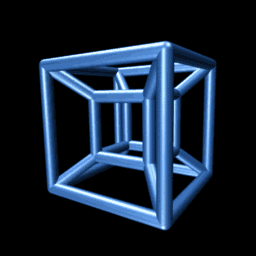COJ976 WZJ的数据结构(负二十四)
|
试题描述
|
|
输入一个字符串S,回答Q次问题,给你l,r,输出从Sl--Sr组成的串在S中出现了多少次。 |
|
输入
|
|
第一行为一个字符串S。
第二行为一个正整数Q。 接下来Q行每行为l,r。 |
|
输出
|
|
对于每个询问,输出答案。
|
|
输入示例
|
|
ababaaabab
5 1 1 2 3 2 2 2 4 1 4 |
|
输出示例
|
|
6
3 4 2 2 |
|
其他说明
|
|
1<=l<=r<=|S|<=100000
1<=Q<=1000000 保证S由26个小写字母组成 |
考虑用后缀自动机来水此题
复习一下SAM,每个结束态S的祖先与S构成了S最长串的所有后缀。
SAM的每个节点表示的串长度在(l[fa[x]],l[x]]之间,因此我们可以倍增来求最上方符合条件的节点,预处理每个节点end-set集的大小,就可以O((|S|+Q)logn)解决此题了

#include<cstdio> #include<cctype> #include<queue> #include<cstring> #include<algorithm> #define rep(s,t) for(int i=s;i<=t;i++) #define ren for(int i=first[x];i;i=next[i]) using namespace std; inline int read() { int x=0,f=1;char c=getchar(); for(;!isdigit(c);c=getchar()) if(c=='-') f=-1; for(;isdigit(c);c=getchar()) x=x*10+c-'0'; return x*f; } const int maxn=200010; int n,od[maxn],x[maxn],f[maxn]; int to[maxn][26],fa[maxn],l[maxn],pos[maxn],cnt=1,last=1; void extend(int c,int id) { int p=last,q,np,nq; l[pos[id]=last=np=++cnt]=l[p]+1;f[np]=1; for(;!to[p][c];p=fa[p]) to[p][c]=np; if(!p) fa[np]=1; else { q=to[p][c]; if(l[p]+1==l[q]) fa[np]=q; else { l[nq=++cnt]=l[p]+1; memcpy(to[nq],to[q],sizeof(to[q])); fa[nq]=fa[q]; fa[q]=fa[np]=nq; for(;to[p][c]==q;p=fa[p]) to[p][c]=nq; } } } int first[maxn],next[maxn],To[maxn],e; void AddEdge(int u,int v) { To[++e]=v;next[e]=first[u];first[u]=e; } int anc[maxn][23]; void dfs(int x) { anc[x][0]=fa[x]; rep(1,22) anc[x][i]=anc[anc[x][i-1]][i-1]; ren dfs(To[i]); } void init() { rep(1,cnt) AddEdge(fa[i],i); dfs(1); rep(1,cnt) x[l[i]]++; rep(1,n) x[i]+=x[i-1]; rep(1,cnt) od[x[l[i]]--]=i; for(int i=cnt;i;i--) f[fa[od[i]]]+=f[od[i]]; } int solve(int L,int R) { int p=pos[R]; for(int i=22;i>=0;i--) if(R-L+1<=l[anc[p][i]]) p=anc[p][i]; return f[p]; } char s[maxn]; int main() { scanf("%s",s);n=strlen(s); rep(0,n-1) extend(s[i]-'a',i+1); init(); int m=read(); while(m--) { int l=read(),r=read(); printf("%d\n",solve(l,r)); } return 0; }




